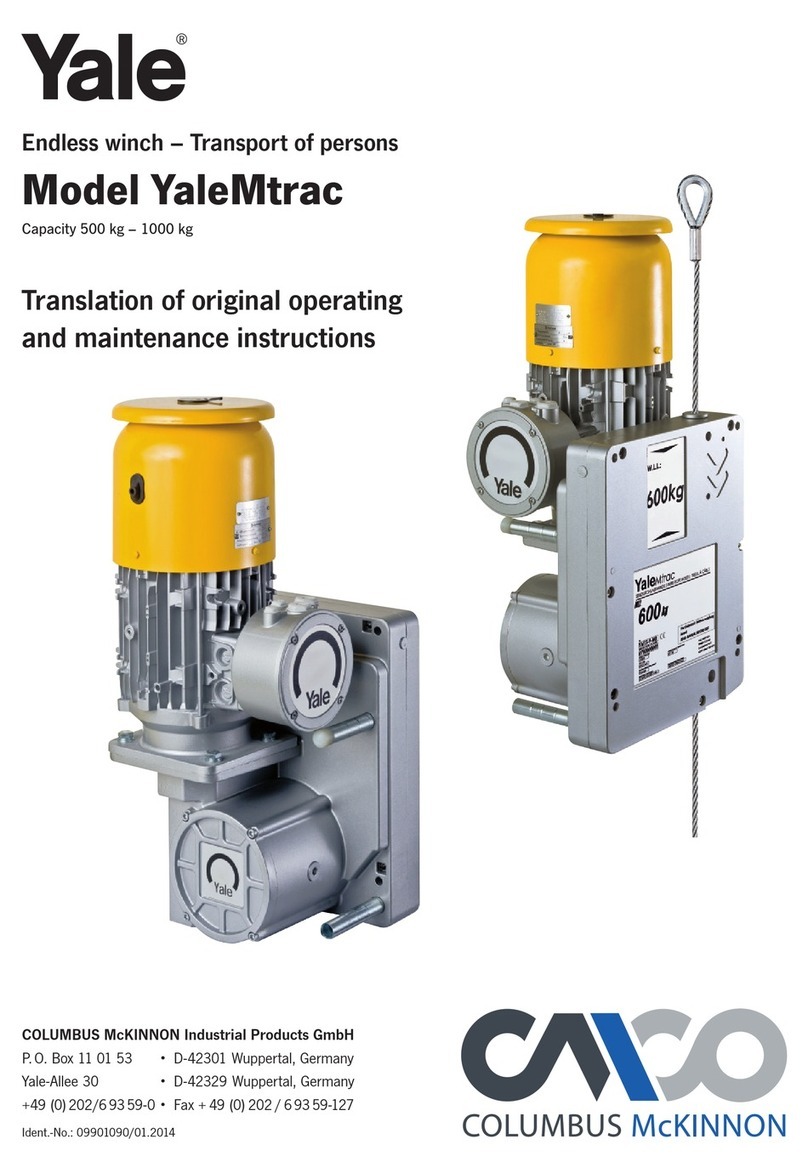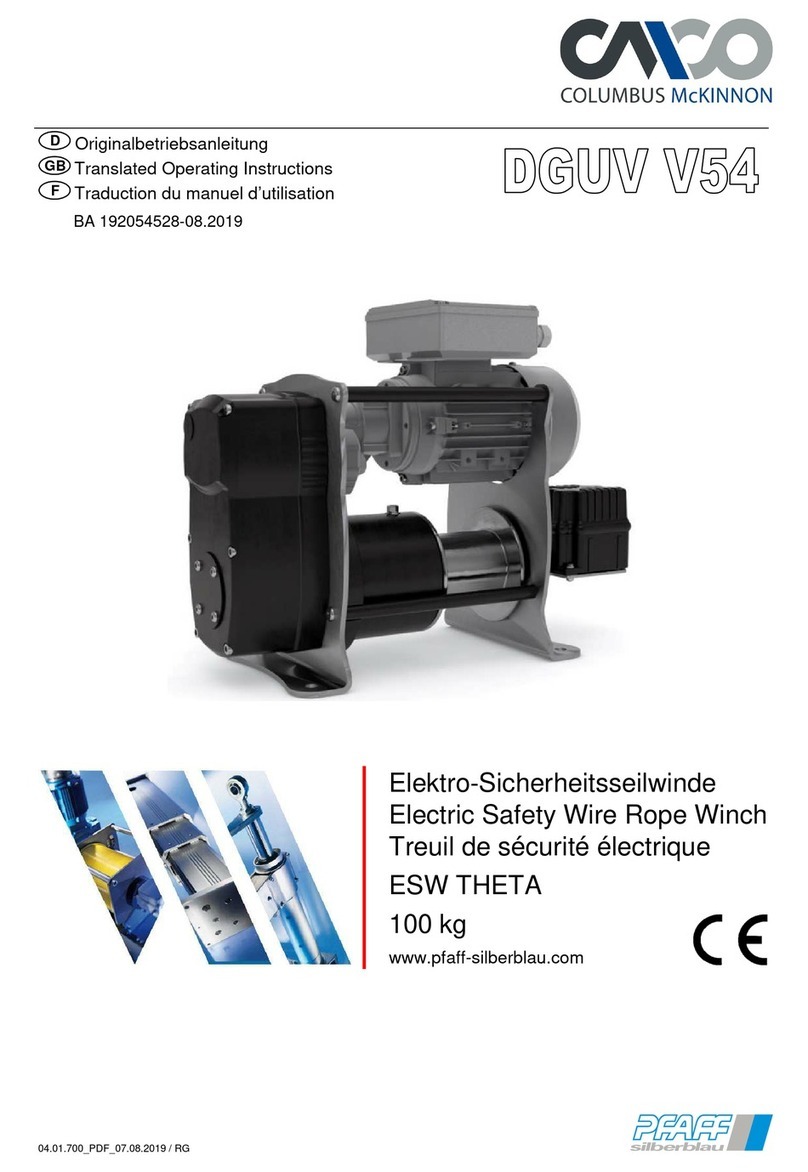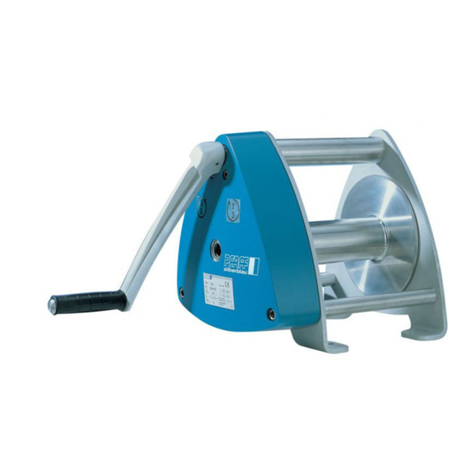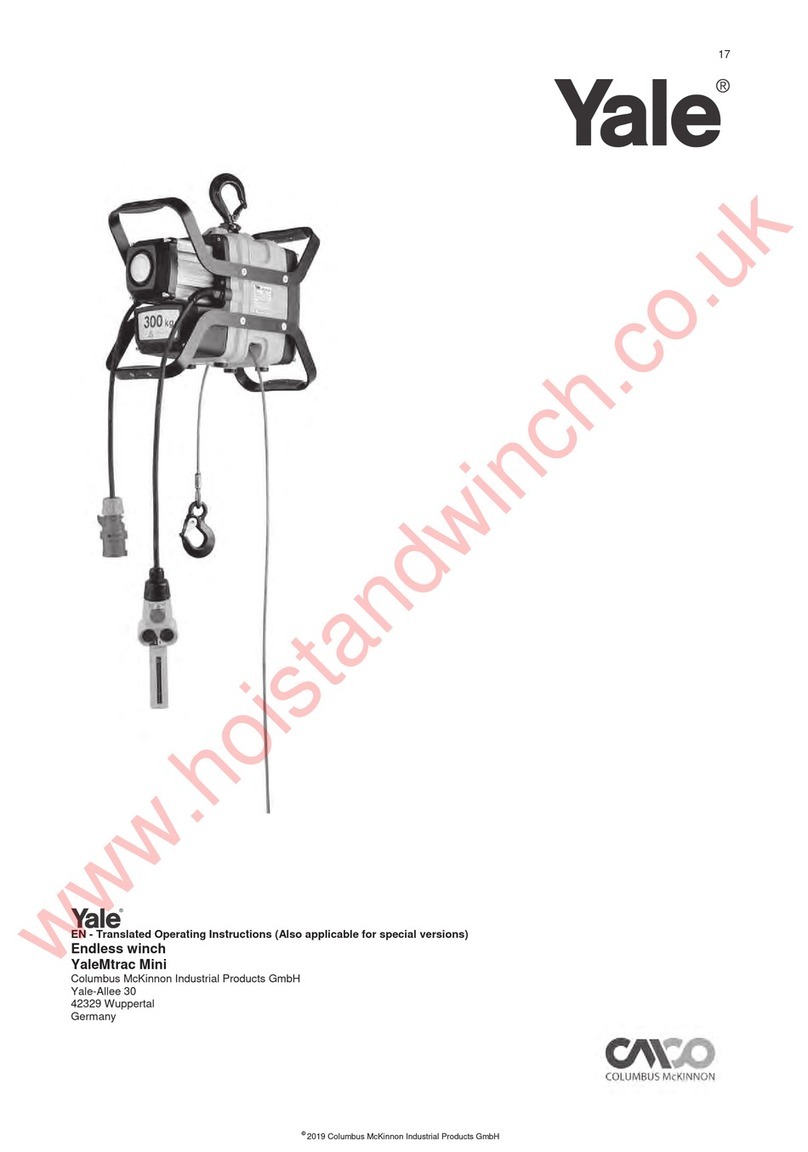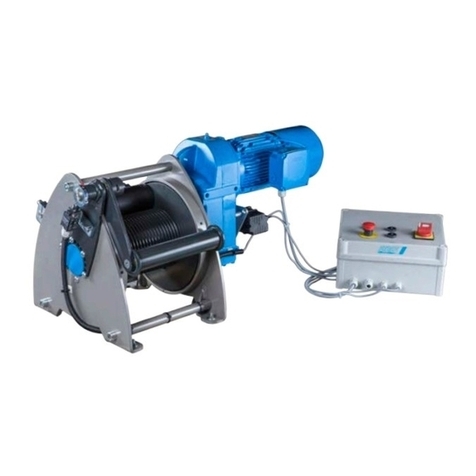
3
English
INTRODUCTION
All users must read these operating instruc-
tions carefully prior to the initial operation.
These instructions are intended to acquaint
the user with the product and enable him
to use it to the full extent of its intended
capabilities.
The operating instructions contain important
information on how to operate the product
in a safe, correct and economic way. Acting
in accordance with these instructions helps
to avoid dangers, reduce repair costs and
downtimes and to increase the reliability and
lifetime of the product. These instructions
must always be available at the place where
the product is operated. Apart from the operat-
ing instructions and the accident prevention
act valid for the respective country and area
where the product is used, the commonly ac-
cepted regulations for safe and professional
work must also be adhered to. The user is
responsible for the proper and professional
instruction of the operating personnel.
CORRECT OPERATION
- The hand winch with spur gear is a manually
operated winch fixed to the wall for lifting and
lowering of loads.
- The capacity indicated on the product is the
maximum safe working load (W LL) that may
be attached.
- The device can be operated in ambient
temperatures between -10° C and +50° C.
Consult the manufacturer in case of extreme
working conditions.
Note: At ambient temperatures below 0°C
GB
the brake should be checked for freezing.
- Power operation is not allowed.
- The winch is not designed for continuous
opera tion.
- Not suitable for use in explosive danger area.
- Not suitable for use in corrosive atmosphere.
- Alterations to the winch or fitting of ac-
cessories are only allowed with our writ ten
approval.
- Pay attention to the technical data and
functional description!
INSPECTION PRIOR TO INITIAL
OPERATION
Each unit must be inspected prior to initial
operation by a competent person. The inspec-
tion is visual and functional. This inspection
shall establish that the unit is safe and has
not been damaged by incorrect transport
or storage. Inspections should be made by
a representative of the manufacturer or the
supplier although the company can assign its
own suitably trained personnel.
SAFETY INSTRUCTIONS
Operation, installation and main tenance work
should only be executed by personnel who are:
- competent
- trained
- familiar with the relevant regulations
Attention: Do not grease or lubricate the
brake mechanism.
- Moving of people by the winch or of loads
over people is strictly forbidden.
- Never touch moving parts.
- Defects must be repaired immedi ately by
competent trained personnel.
THE LOAD
- must not be left suspended without supervi-
sion
- must not be allowed to swing
- must not fall into the wire rope
- never move in areas which are not in clear
view. Total lifting area must be totally visible.
THE ROPE
- should only be used for lifting, lower ing or
pulling of various loads and must not be used
for any other pur pose.
- at least 3 full turns of rope should remain
on the drum when loaded.
- fleet angle (see Picture)
for standard wire rope ≤3°
for special rope ≤1,5°
- when filled to its capacity the drum flanges
must project not less than 1.5 times the
di ameter of the rope.
- examine and service regularly acc. to DIN
15020 page 2
- Auf Freigängigkeit der Kurbel achten
(Kur bel frei raum).
Seileinlauf:
Achtung: Bei falschem Seileinlauf wird die
Bremse unwirksam.
Der Seileinlauf muss ent sprechend der An-
bringung der Handwinde erfol gen. Bei einem
Drahtseilabgang nach unten ist die Winde um
180° gedreht einzubauen.
Achtung: Auf richtigen Seileinlauf ist zu
achten!
Befestigung des Seiles:
- Schraube mit Bohrung durch eine der Boh-
rungen in der Seitenplatte schieben (Fig. 6).
- Das Seilende durch die Bohrung in der
Schraube führen.
- Von der Außenseite (Fig. 7) die Mutter
aufdrehen und mit Handkraft anziehen.
Achtung: Bei Seilauswahl auf technische
Daten des Seiles achten!
Seillänge so bemessen, dass in unterster
Laststel lung mind. 3 Seil win dungen auf der
Trom mel verbleiben.
BEDIENUNGSANLEITUNG
Vor Ingebrauchnahme muss die Winde
zuerst mit 50% der nominellen Last
eingelaufen werden.
Die Winde muss mit 50% der nominellen Last
3 mal eine Trommelumdrehung gemacht
haben. Das Fett des Getriebes muss mit einer
Bürste wieder eingebracht werden. Hiernach
kann die Winde in Betrieb genommen werden.
Die Winde muss für eine gute Wirkung der
Lastdruckbremse mit minimal 25 % der
nominellen Last belastet werden.
SICHERHEITSHINWEIS
Die Winden sind nur für Handbetrieb
geeignet.
- Heben der Last er folgt durch Drehen der
Kurbel im Uhr zeigersinn.
- Senken der Last durch Dre hen der Kurbel
entgegen dem Uhrzeigersinn.
INSPEKTIONS- UND
WARTUNGSANLEITUNG
Sicherheitshinweis
Vor Inspektions- und Wartungs arbei ten (Tab.
2) ist die Winde durch geeignete Maßnahmen
zu entlasten.
Die Lebensdauer der Winde ist begrenzt, ver-
schlissene Teile müssen rechtzeitig erneuert
wer den.
SCHMIERSTOFFEMPFEHLUNG
Schmierstoff für Fettschmierstellen:
Mehrzweckschmierfett DIN 51825 T1 K 2 K
Altschmierstoff ist entsprechend den ge setzli-
chen Be stim mungen zu entsorgen!
BETRIEBSSTÖRUNGEN UND IHRE
URSACHEN (siehe Tab. 3)
ENTSORGUNG
Nach Außerbetriebnahme sind die Teile der
Seilwinde entsprechend den gesetz li chen
Be stimmungen der Wiederverwer tung zuzu-
führen bzw. zu entsorgen!
